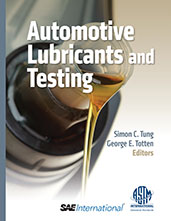Technical Paper
An Accelerated Carburizing Process
2005-11-22
2005-01-4174
One of the most important heat treating processes is steel carburizing. However, the relatively long process times makes carburizing (and related thermochemical processes) a particularly energy consumptive and expensive process. Thus, if significant reductions in process times or temperatures can be achieved, this would result in substantial product cost savings and reduced energy consumption. Various methods of accelerating the carburizing process have been reported previously including: the use of rare earth metals, optimization by computer control of endo gas composition, use of superficial nitriding and others. In this paper, an overview of a new process using a hydrocarbon decomposition reaction catalyst that results in substantial diffusion rate acceleration and/or the potential use of significantly lower carburization temperatures will be discussed.


